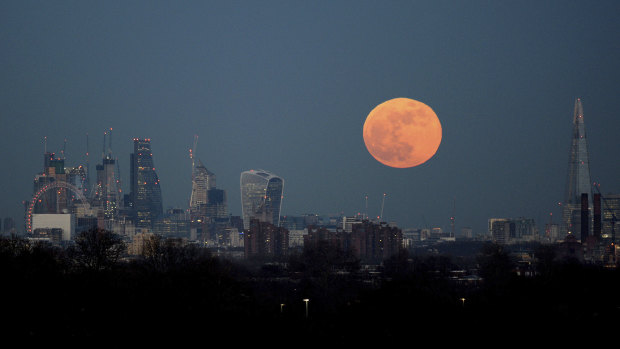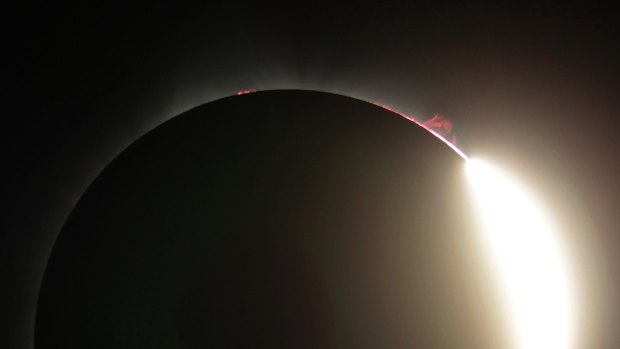This was published 5 years ago
Total lunar eclipse to meet supermoon
Cape Canaveral: Here comes a total lunar eclipse and supermoon, all wrapped into one.
The moon, Earth and sun will line up this weekend for the only total lunar eclipse this year and next. At the same time, the moon will be ever so closer to Earth and appear slightly bigger and brighter than usual in the northern hemisphere - a supermoon.

The moon rises over the London skyline.Credit: PA
"This one is particularly good," said Rice University astrophysicist Patrick Hartigan. "It not only is a supermoon and it's a total eclipse, but the total eclipse also lasts pretty long. It's about an hour."
The whole eclipse starts Sunday night or early Monday (US time), depending on location , and will take about three hours.
It begins with the partial phase around 10.34pm New York on Sunday. That's when Earth's shadow will begin to nip at the moon. Totality - when Earth's shadow completely blankets the moon - will last 62 minutes, beginning at 11.41pm on Sunday in New York.

This photo shows solar flare as the sun emerges from a total eclipse by the moon.Credit: AP
If the skies are clear, the entire eclipse will be visible in North and South America, as well as Greenland, Iceland, Ireland, Great Britain, Norway, Sweden, Portugal and the French and Spanish coasts. The rest of Europe, as well as Africa, will have partial viewing before the moon sets.
During totality, the moon will look red because of sunlight scattering off Earth's atmosphere. That's why an eclipsed moon is sometimes known as a blood moon. In January, the full moon is also sometimes known as the wolf moon or great spirit moon.
So informally speaking, the upcoming lunar eclipse will be a super blood wolf - or great spirit - moon.
Unfortunately, Asia, Australia and New Zealand are out of luck. But these regions had prime viewing last year, when two total lunar eclipses occurred.
The next total lunar eclipse won't be until May 2021.
As for full-moon supermoons, this will be the first of three this year. The upcoming supermoon will be about 357,300 kilometres away. The February 19 supermoon will be a bit closer and one in March will be the furthest.
AP